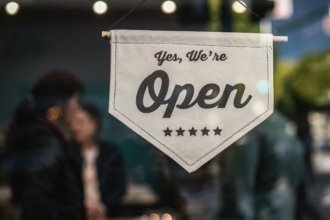Ryan Hoover’s entrepreneurial journey has been a lifelong endeavour of curiosity and experimentation. Through selling video game handbooks as a child to writing over 150 blog posts in one year to founding a hugely popular product-focused website, Ryan is a maker at his core—full of inspiration, ingenuity, and advice for all entrepreneurs out there.
Ryan launched Product Hunt in November 2013 as an email list highlighting new products. Today, it’s known as a website for startups, makers, and the product obsessed—“a global community of people sharing and discovering the latest in tech.”
Product Hunt has recently gone through a couple of big shifts, such as AngelList’s acquisition of the company in 2016 and introducing Product Hunt’s new profitability driven goal in 2018. For most companies, changes like these would cause organizational pandemonium, but not for Product Hunt. Ryan has made sure that the company culture stays unaltered and that the website continues to be a community for people who love new tech products—with their iconic kitty mascot intact.
Our comprehensive interview with Ryan covers where his idea for Product Hunt originated, how he grew the company, tips for entrepreneurs, the strangest product he’s come across, favorite Philz coffee, and more.
Ryan, where did it all begin?
I grew up in Eugene, Oregon with entrepreneurial parents. Since I was born, my parents worked together and owned their own businesses. When I was a kid they owned a video game store, which was pretty awesome because I got to play all of the video games for free. I had a great childhood and my parents’ entrepreneurial nature rubbed off on me as I explored various projects. When I was a kid I would buy and sell things on eBay and make video game handbooks and sell those in my parent’s video game store—just stuff like that.
This fast forwards to where I am now. Product Hunt was one of those many different experiments that I’d done in the past where the idea was more just like, “Hey I really want this thing to exist—I want to try this project.” With no real expectation of making any money or anything, or at that time, turning it into a real business.
My dad’s always said, “Find a hole and fill it.” I took his advice as inspiration for starting new projects, experimenting with ideas that solved problems I had or observed.
You’re an avid technology writer. What made you start writing?
In school I hated writing, and I think it’s because teachers were making me write about things I didn’t care about, such as a book report on Catcher in the Rye. I found it boring. I always grew up, for years, thinking, “I hate writing, it’s so boring, I don’t want to do it,” which is ironic because at some point I started writing things I did care about. I did a little bit in college, but most of it was post college.
I started writing a lot more in 2012 and 2013. In 2013 I wrote 150 blog posts that year—some of them are really short, but at the end of the day, I was surprised when I looked back to find I had published an essay nearly every two days that year. I enjoyed it and as an introvert, there was something increasingly satisfying in writing behind a computer and sharing it with the world online.
I enjoyed using writing as a vehicle to learn about products, often writing teardowns about popular products in attempt to articulate why they were designed the way they are. An example of that was in the early days of Tinder—I would play with the app and ask, “Why is this so compelling?” “What are the subtleties in the product design that are effective or working?” And I would just try to understand them and do some research on the cognitive biases and cues used by the app’s designers to better understand the product.
So this is where the Product Hunt idea originated from—this desire to dissect products and share with others?
It’s definitely within the same interest space, but that wasn’t the motivator. The real motivation was even more simple. My friends and I are always sharing cool products that we find—either through SMS messages or other group chats, and in person we ponder, “What’s on your home screen?” “What are you playing with?” “What do you think’s cool?”
So there’s this sort of general behavior people like to talk about product the same way they like to talk about movies or music or other forms of entertainment.
And what I realized was, we were already doing this, but there’s no place on the internet dedicated to this conversation—we have Twitter and Facebook and you have general purpose social networks, but they aren’t designed for discovering new products.
The other piece was that there wasn’t necessarily a single list of “Here’s a new, cool product to launch today.” The best out there today is still tech publications, but my frustration with those is that they include a lot of other news outside of products themselves that I was less interested in, and furthermore, they also had no community aspect. So, the idea was very simple, to create an email list surfacing the most interesting, new products of the day.
Building a following is crucial for startups. How did you build Product Hunt’s audience?
In the very beginning when I published the email, I didn’t have a massive following, but I did have enough people following me within the tech community who would listen and click on the links I tweeted out.
And without the prior years of blogging and building relationships with other people, Product Hunt wouldn’t have worked if I didn’t have at least some sort of following. Having the first 300 subscribers was incredibly helpful for kickstarting the community. And when our site went public, there were two growth mechanisms that were particularly helpful at that stage.
One was general press. Since we were basically a new source for discovering new products and the people behind them, several reporters started using it, it was actually relatively easy for us to get press and attention from other publications. In the beginning when TechCrunch would write about Product Hunt, they would sometimes find a product on Product Hunt and link to us—that was really meaningful because we were starting with such a small user base and they were writing to an audience that was very relevant to ours. So the people that were clicking through were finding value in it. It was one of the rare cases where press in the early stages was actually a good acquisition strategy. For most companies, press doesn’t reach their actual target audience and it can be a more vanity metric than a growth strategy.
The second was a combination of people sharing and word of mouth, and that came in the form of people like myself that enjoy finding and sharing new things on Twitter, Facebook, and elsewhere. But then the makers of these products would also share their product pages and discussions were happening. Those two vehicles were really how Product Hunt grew in the first year.
What’s the biggest challenge you’ve had with Product Hunt?
I’d say there’s personal challenge and there’s more broad business challenges. I think the personal challenges are no doubt the ones from having to let go of a teammate for various reasons—that will happen inevitably. If you’re not letting someone go, and you haven’t ever fired anyone, something’s probably wrong. That’s probably the hardest thing to manage in my role, especially when your teammates become friends that have also made sacrifices to join our mission.
And for more of the business side, I think the challenges vary. I think always keeping up momentum is one of them that every company runs into. In that in the very beginning, there’s a lot of excitement and momentum, and that comes, but then it goes. Every company also runs into some stagnation (with some exceptions). Every company tries things that doesn’t work. It’s inevitable. One of the harder parts is just ensuring that everyone on the team is still pumped, working hard and excited even when things aren’t going great.
Has anything changed since selling Product Hunt to AngelList?
This is the only acquisition I’ve gone through, so data point of one, but I feel like our position is somewhat unique in that the team and community has remained relatively intact and authentic to how we started. Our aim from the beginning was to maintain autonomy and maintain our brand and our voice.
And in other cases, a lot of times with companies, they’ll either kill off a product or merge teams together, they integrate products—there’s a lot of challenges that come with that, and when we made this decision, it was important to me that we had ProductHunt.com—that we still have our kitty mascot and still maintain a lot of that control. AngelList was super on board with that. They understand the importance of our community and branding.
What is the strangest or craziest product that you’ve seen come through Product Hunt?
Oh man (laughs). There’s always some weird stuff. There’s this one product called, Licki Brush, and basically it’s a brush that you put in your mouth and you use it to brush your cat, as if you’re licking your cat. It’s pretty absurd.
Welcome to my life.
What’s next for Product Hunt? Are there any ideas or any vision you can share with us.
We have a bunch of stuff going on! One of them is getting to profitability this year, which is relatively new for us—we’ve intentionally forgone focusing on revenue since the beginning and until more recently, around September and October of last year, we started some experimentation. I can’t share numbers right now, but last month we covered more than half our expenses, and I’m pretty proud of that because we started from making $0 dollars six months ago. So we’re making really good progress on the revenue side.
And along with that revenue initiative, is building out our new platform called, Ship, which is essentially a tool kit for startups and makers to help them communicate with their users, acquire beta testers, and understand their customers. In some ways, we’re essentially trying to piece all of these tools that people are already using today—when it comes to surveys, landing pages, email, marketing, etc. That’s one effort within our revenue initiative.
The other category is general user growth. How do we expand the Product Hunt platform, get more people using it and finding value in what we’re offering. We’re doing it in a few different ways—some of it is less externally visible, such as SEO, which is producing strong results. But then it’s also experimenting with new product initiatives, including a new place for makers to share what they’re working on and get help from others. We’re starting to get some good feedback from this small community so far, which I’m pretty excited about.
As an entrepreneur, what inspires you?
That’s a good question because it’s hard to articulate. So there’s the warm, fuzzy stuff that will be inspiring sometimes, where a maker or someone will email us after and say, “Hey, thanks so much for supporting us. After we launched, this, this, and this happened, and we couldn’t be here without you…” Those types of things are certainly motivating.
I think another thing is just the thirst to make a bigger impact and be bigger. Like the hunger to move that number from x to y, whatever number that is—whether it’s revenue or user growth or what not, in many ways, building products is like a giant game in which you’re trying to think strategically like, “What could I do?” “What should I do?” “What could we build?” And I love it because my favorite part of Product Hunt in this role is building new products and new experiences, and again, they don’t all work, but it’s motivating and fun on its own.
If you could give all entrepreneurs one piece of advice, what would it be?
It depends on the context of the entrepreneur, but one piece of advice for some people would be to build a following. When I first started Product Hunt, I had a few hundred people sign up immediately and that was critical in getting Product Hunt out the door and getting some early traction.
That was only possible because I spent a lot of time, years prior, writing and building some following, building relationships with a lot of notable people that became core members of the community in the beginning. I think it’s something a lot of entrepreneurs don’t think about.
I think there’s a lot of value in creating an audience of some sort, and I don’t mean that in a superficial, vain way of “I just want to increase my Twitter following,” but if you can start building an audience of people within some sort of similar demographic or interest space as you, it’s tremendously valuable for anything that you’ll build and launch in the future because you’ll have someone to launch it to. The hardest thing is distribution for any kind of product, and even just getting beta users can be really difficult, but if you have an audience of people who care about what you’re doing, you now immediately have access to people to support you and what you’re building.
What do you do to be your most productive self? I’m sure you have a million things going on everyday!
I don’t have a great process I think when it comes to managing my time—I could probably do a better job of it. For me, I jump around to a lot of things, partly because of my role—everything from product to marketing to team stuff to everything else, which I enjoy because I like the diversity of things that I get to do, but as a result, it makes it harder to really plan out my time schedule and focus several hours on a single thing.
I think probably the most productive thing that I’ve been doing more recently, is in the beginning of every week I write down, essentially three things that need to get done that week. If I get nothing else done but these three things, then it’s still a win. And that helps me prioritize and focus on what’s most important because it’s really easy to get bogged down by a lot of lesser important things, then your week is gone.
What started your Philz coffee infatuation and what’s your go-to drink?
When I first moved to San Francisco, my office was in San Mateo (20 miles south of San Francisco). My former boss and I would often carpool down together and I’d pick him up. And there was a Philz by his place. We’d swing by, grab Philz, and drive down to San Mateo, and that was my first introduction.
The coffee grew on me and quickly it became a habit—I’m a very routine, habitual person, maybe this goes back to my productivity piece, but I spend every morning at least for a couple of hours at Philz, and I started doing that years ago.
Even Product Hunt itself was started in a Philz. I like routines, I like predictability, which is ironic, considering entrepreneurship isn’t predictable at all.
My default drink is the Silken Splendor—it’s a good, safe, smooth bet.
Interview was conducted by Annabel Maw, Marketing Communications Specialist at JotForm. @AnnabelLMaw
















Send Comment:
3 Comments:
More than a year ago
I am a web developer. I like this website so much.
This web site is one thing that’s needed on the web, someone with some originality! advanced driver updater
More than a year ago
Curious if Product Hunt has self-help, coaching type "products", such a video series + workbook that teaches someone how to do something?
More than a year ago
Great post